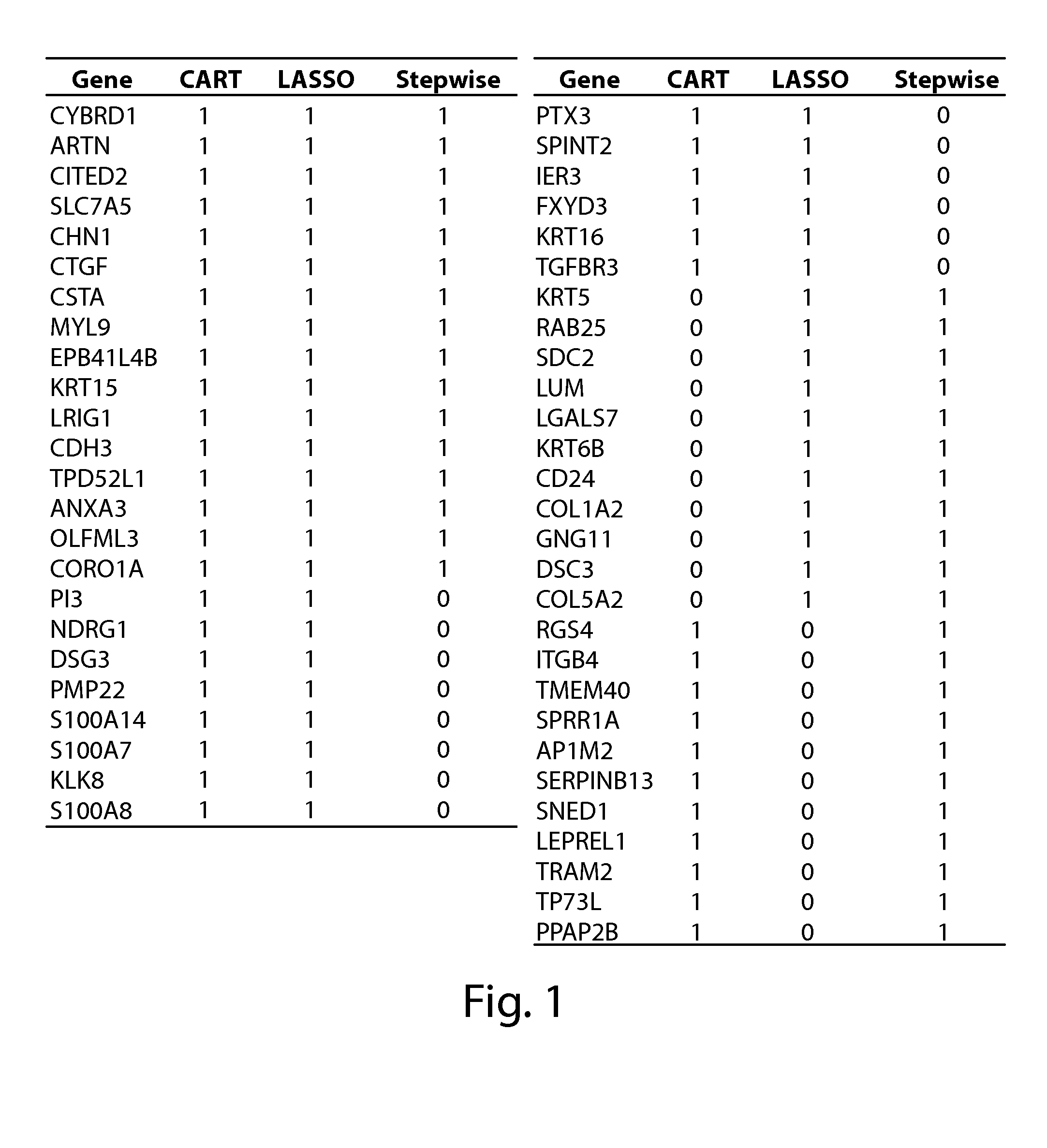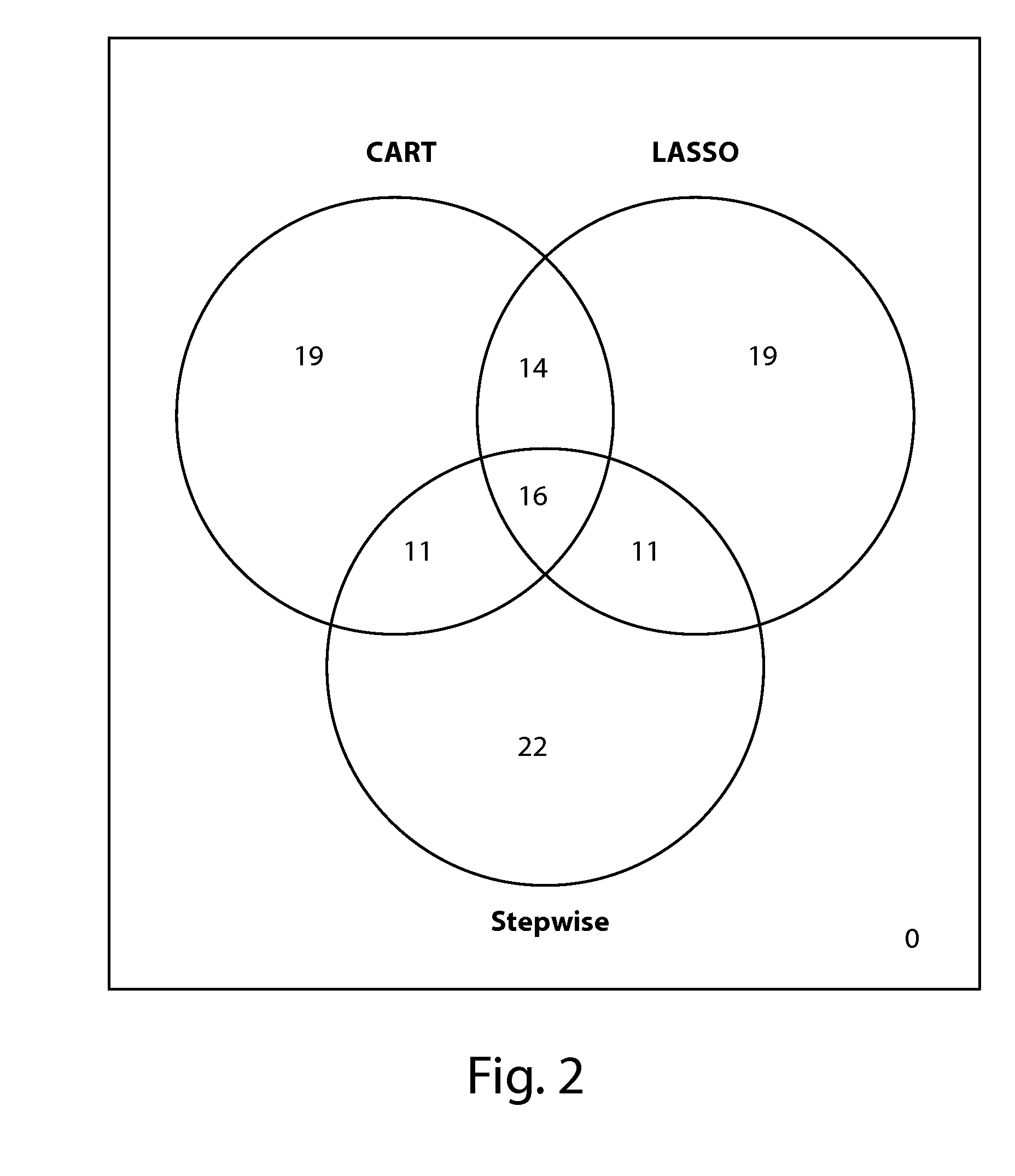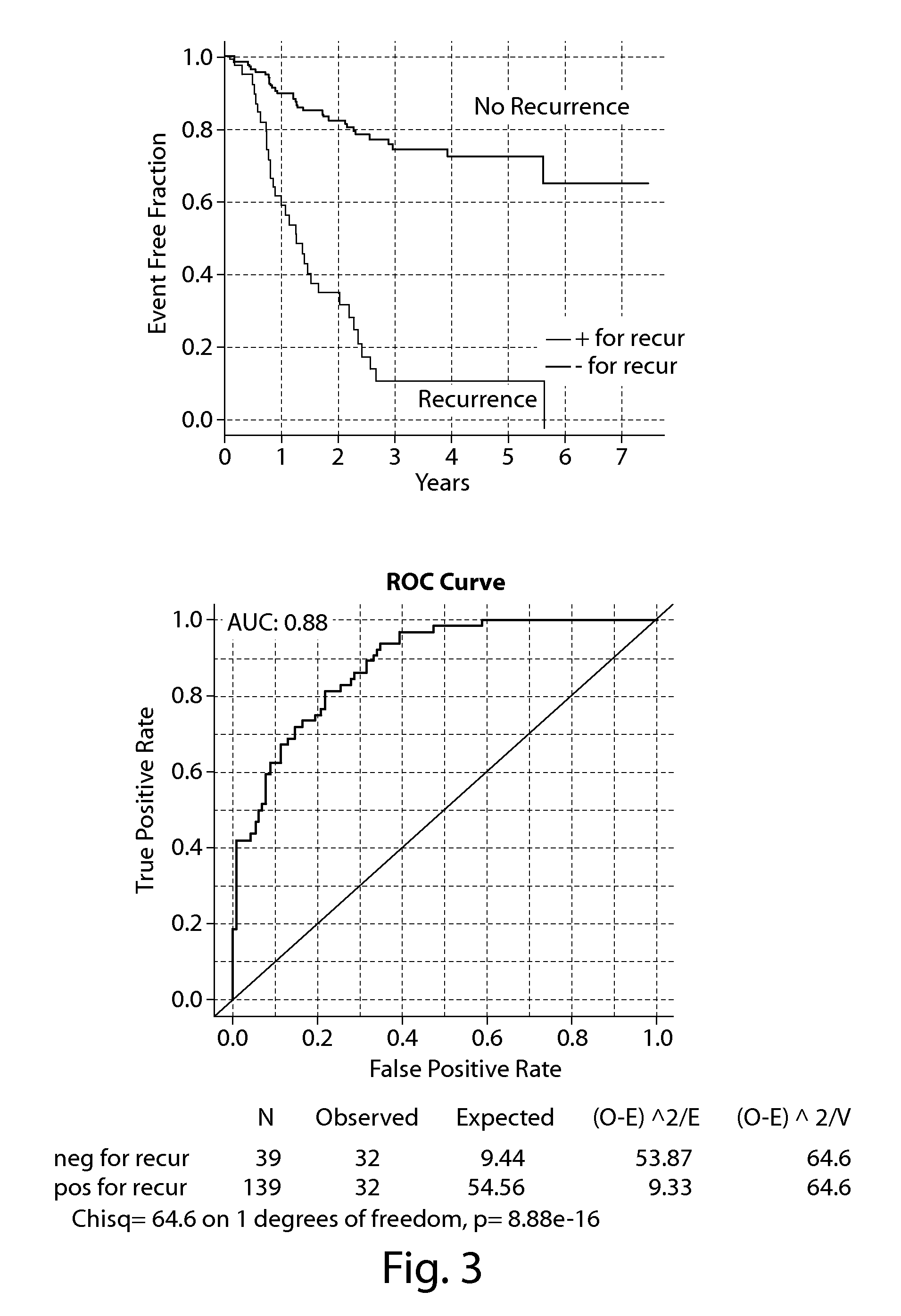Biomarkers for cancer stem cells and related methods of use
a cancer stem cell and biomarker technology, applied in the field of biomarkers for cancer stem cells and related methods of use, can solve the problems of ineffective treatment regimens of many cancers, and achieve the effect of improving the safety and efficacy of available therapeutic regimens
- Summary
- Abstract
- Description
- Claims
- Application Information
AI Technical Summary
Benefits of technology
Problems solved by technology
Method used
Image
Examples
example 1
Set of Genes Derived from Cancer Stem Cell and EMT Identifiers Found in More than One Statistical Measure for Gene Ranking
[0596]Three statistical processes of gene sampling methods were utilized to rank genes that contribute to tumor initiating cancer cells, cancer stem cells, and cancer associated mesenchymal cells (FIG. 1). The three partitioning and ranking methods used were LASSO [LASSO Variable Selection; Tibshirani, R. (1996)], Recursive Partitioning (or CART), and Stepwise selection. Patient samples used to train the models were classified as likely to recur using an arbitrary threshold as follows, Rscore <0.7 as ‘predicted recurrence’. In the LASSO method, the process is to fit outcomes using all genes, with the added restriction that the sum of model parameters must be less than an arbitrary threshold. While increasing the threshold in small steps and re-fitting the outcomes model; the determined gene ranking is the order that the genes model parameter exceeds threshold. In...
example 2
Determination of Candidate Cancer Stem Cell Genes that Increase the Performance of Gene Set Models for Identifying the Recurrence-Free Patient Subset in Breast Cancer
[0606]In another example, genes that significantly contribute to the ability of gene expression signatures to predict recurrence of cancer were discovered by a process of combining genes with other gene sets. In this exercise, a similar evaluation of breast cancers was explored as an example of the method of discovery and identification of important genes. These genes may describe properties of cancer stem cells, tumor initiating cancer cells, cancer stem cells, and cancer associated mesenchymal cells. This example was conducted on triple negative breast cancer, but it is likely not to be limited to this cancer type or disease. In the present example triple negative breast cancer patients (n=178) were evaluated by standard histopathology criteria and determined to be of the triple negative breast cancer subtype by exami...
example 3
Identification of Genes Expressed from Tumorspheres that Increase the Performance of Gene Set Models for Identifying the Recurrence-Free Patient Subset in Breast Cancer
[0611]The identification of critical genes from cancer stem cells and tumor initiating cancer cells is exemplified by analysis of in vitro formation of tumorspheres from human cancer cell lines. In this example, tumorspheres were derived from four human breast cancer cell lines: MDA-MB-231, SUM-159, MCF7, and Hs578T. Notably, two of these cell lines are derived from breast cancer patients with basal-like morphology. The method illustrates a means to determine the relative expression of candidate cancer stem cell and tumor initiating cancer cell genes by comparing tumorspheres with two-dimensional cell culture. The fold-change in gene expression was measured by Q-PCR for RNA samples isolated from Tumorspheres or from two-dimensional cell culture of human breast cancer cell lines. The genes KRT5, SERPINF1, S100A4, RGL1,...
PUM
| Property | Measurement | Unit |
|---|---|---|
| distance | aaaaa | aaaaa |
| average distance | aaaaa | aaaaa |
| distance | aaaaa | aaaaa |
Abstract
Description
Claims
Application Information
 Login to View More
Login to View More - R&D
- Intellectual Property
- Life Sciences
- Materials
- Tech Scout
- Unparalleled Data Quality
- Higher Quality Content
- 60% Fewer Hallucinations
Browse by: Latest US Patents, China's latest patents, Technical Efficacy Thesaurus, Application Domain, Technology Topic, Popular Technical Reports.
© 2025 PatSnap. All rights reserved.Legal|Privacy policy|Modern Slavery Act Transparency Statement|Sitemap|About US| Contact US: help@patsnap.com



